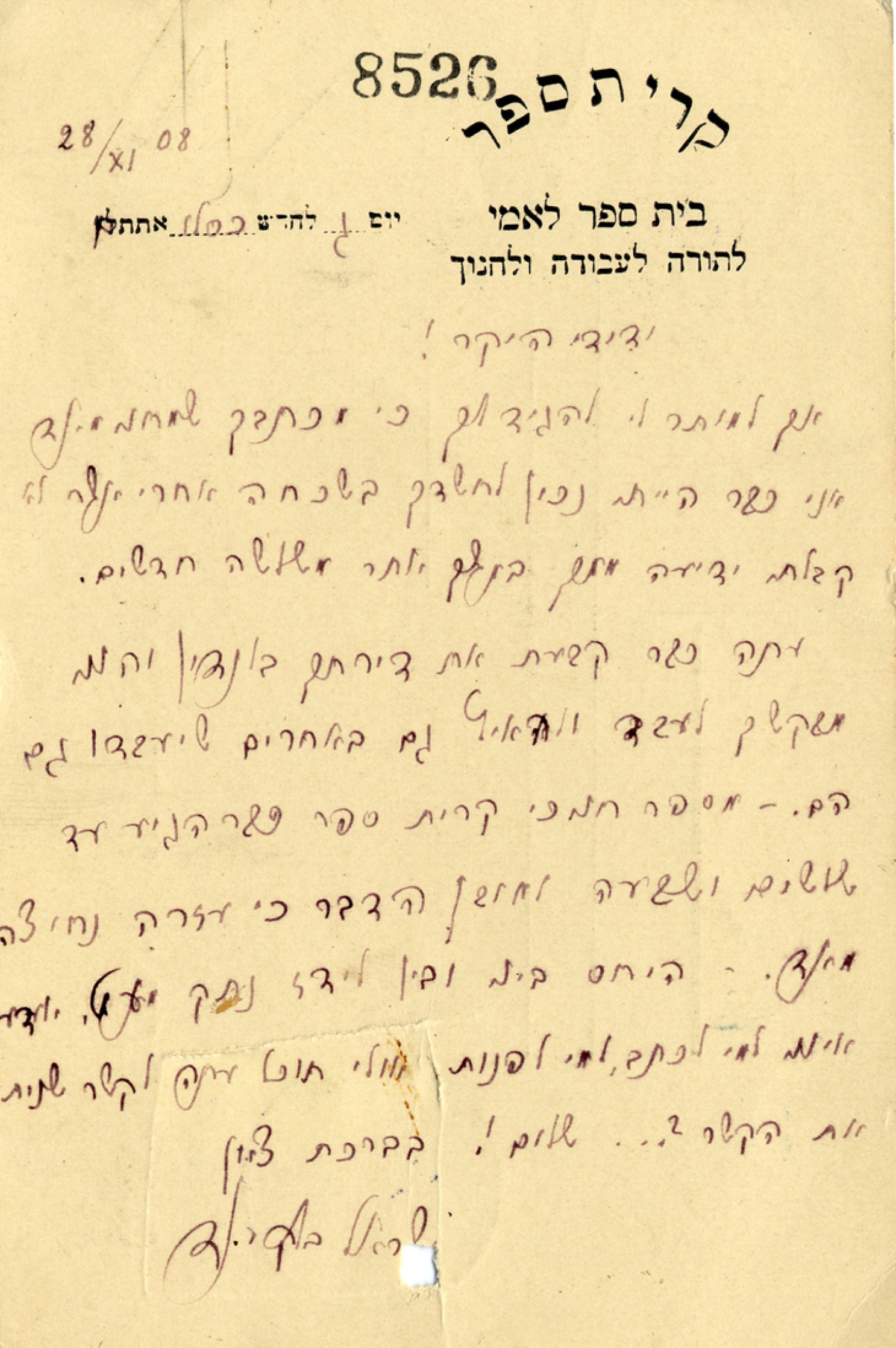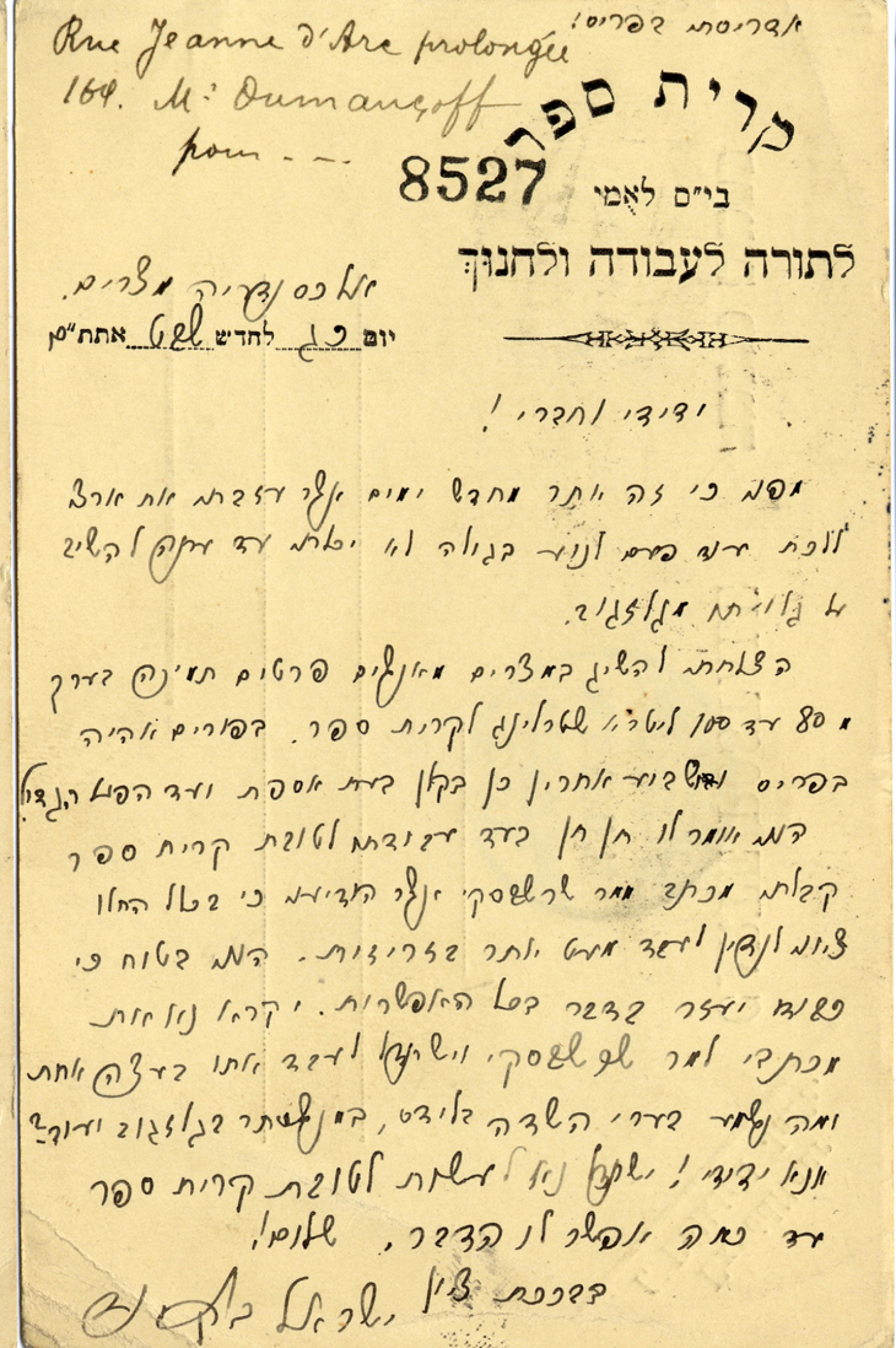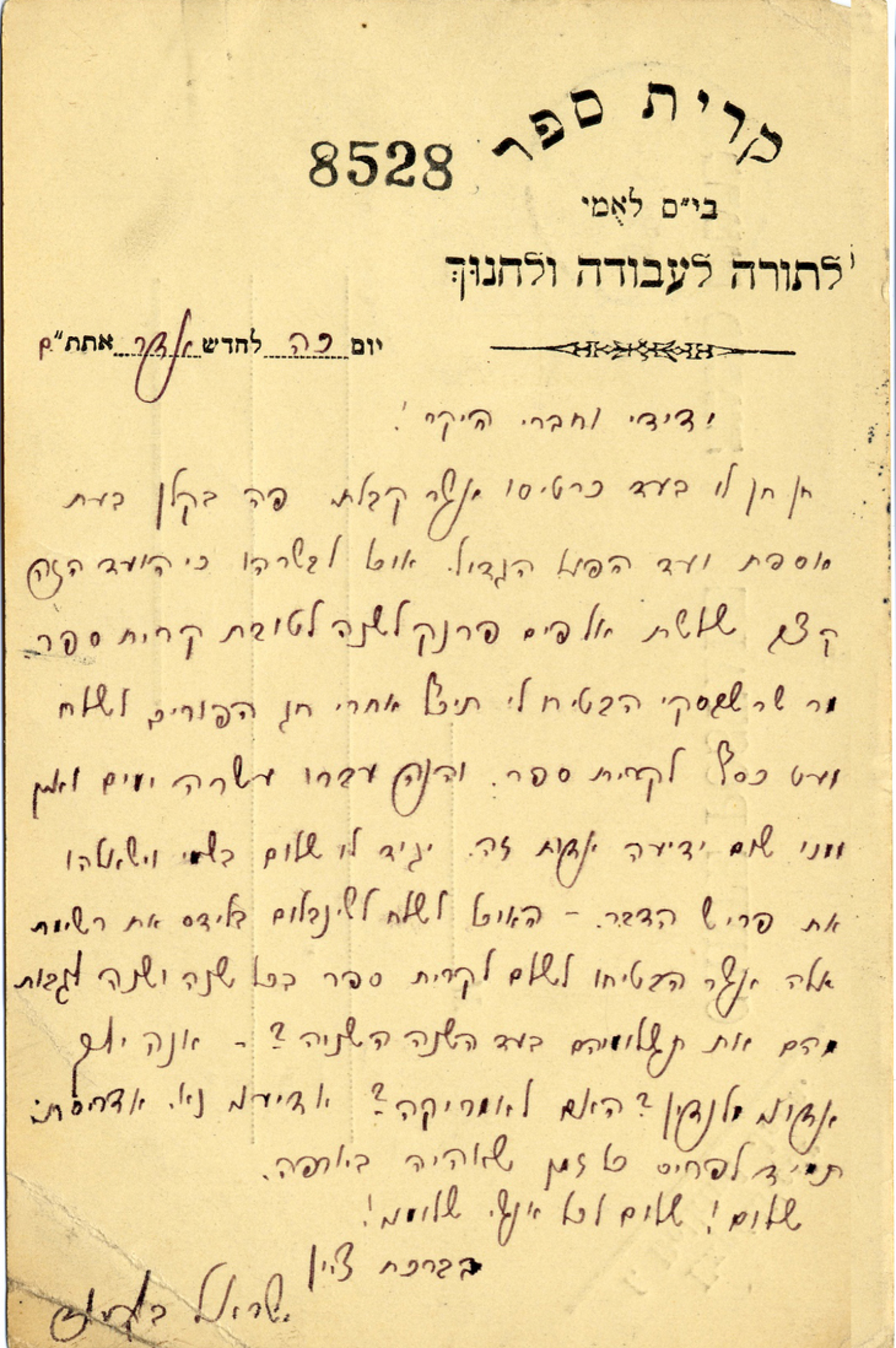Di gantse velt af a firmeblank: The World of Jewish Letterheads
Assemble the letterheads of Jewish organizations, institutions, and individuals in Europe, North and South America, and Palestine from the 1890s to the eve of World War II in 1939 and you have a portrait of the Jewish world: transnational; diverse in language, political, and religious orientation; and flourishing.
Di gantse velt af a firmeblank (The Whole World on a Letterhead) is an experiment in building that portrait. Here, we hope to bring you several times a month, a different example of letterhead from a single collection in the YIVO Archives, the Papers of Kalman Marmor.
Marmor, a Yiddish writer and cultural activist, was born October 11, 1879 in Mayshigola, Vilna Gubernia (today Maišiagala, Lithuania). In 1906, he settled in the U.S. Initially active with the Labor Zionist movement, he later became a Communist. He was an organizer of the 1937 World Yiddish Culture Congress, cultural director of the International Workers Order, and a contributor to the Communist Yiddish newspaper, Morgn Frayhayt. Between 1933 and 1936, he lived in Kiev, where he worked at the Institute of Jewish Proletarian Culture and prepared scholarly editions of the work of American Yiddish poets and writers. During Stalin’s Great Terror, the Institute was liquidated, and much of its leadership was arrested and executed. Marmor, an American citizen, returned to the U.S. He died in Los Angeles in 1956.
His papers at YIVO contain several thousand letters from the turn of the 20th century to the 1950s. He had an astonishingly diverse array of correspondents, not limited to Zionist and Communist activists.



Three postcards from Israel Belkind on Kiryat Sefer letterhead to Kalman Marmor, 1908. (RG 205 Folder 105)
Long before Marmor became a communist, he was a Zionist. Among the letters in his papers are these Hebrew postcards from Israel Belkind (1861–1929), a founder of the Bilu movement. Belkind, a native of Minsk, organized the first group of Biluim, which arrived in Ottoman Palestine in July 1882.
By 1908, Belkind had become a prominent educator. In 1904, he founded Kiryat Sefer, a school in the village of Meir Shfeya, which took in orphans from the Kishinev pogrom. It was the first “youth village” in the Yishuv, the Jewish community in Palestine. He later moved the school to Ben Shemen (where there is another youth village today, established in 1927) after quarrels with the representatives of Baron Edmond James de Rothschild, benefactors of Meir Shfeya.
Here, Belkind writes to Marmor in London. Marmor had lived there from 1902-1906, working as a lecturer, speaker, and editor of the radical Zionist Yiddish-language publication, Der koysl maarovi (Western Wall) and of the Yiddish weekly, Der Londoner Yud (The London Jew). (These postcards indicate that though Marmor emigrated to the United States in 1906, he may still have been living part time in London in 1908. Belkind mentions receiving a postcard from him from Glasgow and asks “Where will you go from London? To America?”)
Belkind is apparently on the road (“it’s been a month since I left my country to once again wander in exile”), fundraising for Kiryat Sefer, first in Cairo, where he succeeds in raising money from “private individuals,” and then in Köln, where he is thrilled to obtain an allocation of 3,000 francs a year from the board of the Zionist General Council. He also mentions supporters in Leeds.
Series curated by Roberta Newman; Images digitized by Vital Zajka. Biographical information on Kalman Marmor from biographical note by Daniel Soyer in the inventory to RG 205, Papers of Kalman Marmor.